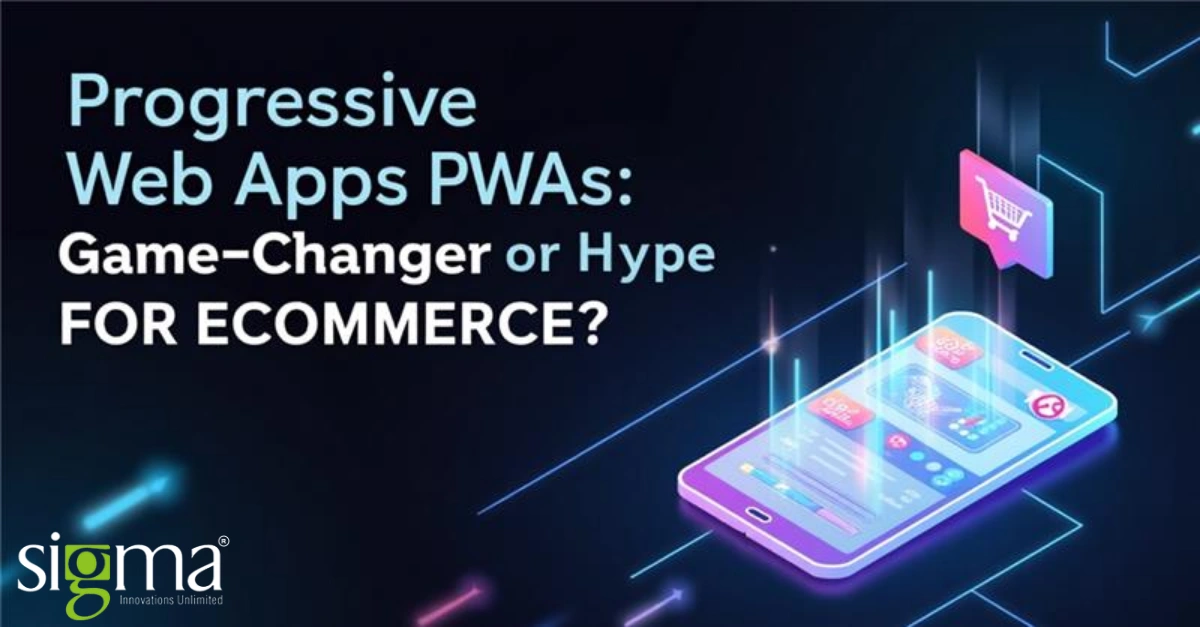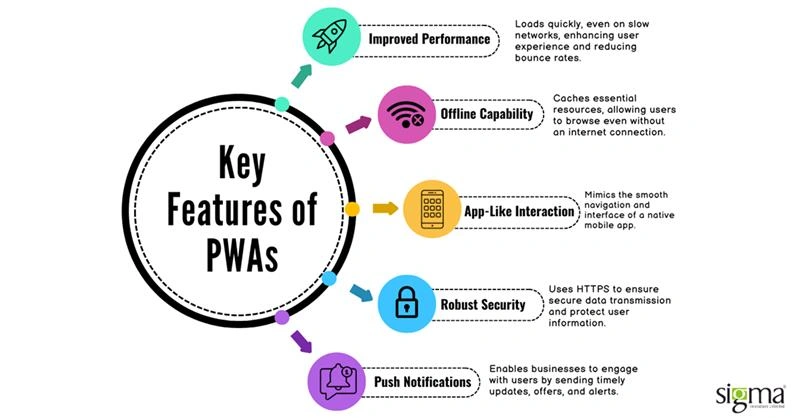Progressive Web Apps (PWAs): Game-Changer or Hype for eCommerce?

In the rapidly evolving landscape of eCommerce, businesses continually seek innovative solutions to enhance user experience, boost engagement, and drive conversions. One such notable innovation that has captured widespread attention is the Progressive Web App (PWA). But the question remains: Are PWAs a revolutionary game-changer for eCommerce, or are they merely hype?
What Is a Progressive Web App (PWA)?
A Progressive Web App is a type of web application that leverages cutting-edge web technologies to provide a seamless, app-like experience right in the web browser. Unlike traditional mobile apps, PWAs don’t require installation from an app store but function like a native app while maintaining the accessibility of a website.
PWAs are optimized for performance, working smoothly even in low-network conditions or offline, and can be added to a user’s home screen just like a regular mobile app.

Components of Progressive Web Apps (PWAs)
To provide a fast, secure, and engaging experience, PWAs rely on essential components that optimize their functionality:
1. Secure HTTPS Protocol
All PWAs are served over HTTPS, ensuring encrypted and secure communication between users and servers. This enhances trust, protects sensitive data, and improves search engine rankings.
2. Service Workers for Offline Access
Service workers act as background scripts that cache important website data, enabling PWAs to function without an active internet connection, ensuring fast page loading and a smooth user experience.
3. Web App Manifest for Customization
The web app manifest is a JSON configuration file that defines a Progressive Web App’s (PWA) visual presentation, operational characteristics, and UI settings (e.g., name, icon, theme color), ensuring brand consistency and a native-like experience when installed.
4. Responsive and Lightweight Core Architecture
PWAs are developed with a responsive design, ensuring seamless performance on a wide range of devices and screen sizes.Their lightweight build optimizes loading speed and reduces server requests, making them perfect for users in areas with restricted bandwidth.
5. Push Notifications for User Engagement
Like traditional apps, PWAs support push notifications, allowing businesses to re-engage users with personalized messages, offers, and alerts. This feature is particularly beneficial for eCommerce platforms looking to increase customer retention.
Also Read: Hyvä Vs PWA: Where to Invest?
Why PWAs Are a Game Changer for eCommerce in 2025?
As businesses seek innovative, cost-effective, and high-performance digital solutions, PWAs are emerging as a leading alternative to traditional mobile apps. Here’s why they’re trending in 2025:
1. Fast Performance & Improved User Experience
Why It Matters: Users expect immediate access to content, and slow-loading websites result in higher bounce rates.
How PWAs Solve This Issue:
- Pages load instantly as key resources are pre-loaded and cached, utilizing service workers.
- Progressive Web Apps (PWAs) provide a seamless browsing experience, ensuring functionality even in environments with low or intermittent network connectivity.
Real-World Example: Twitter Lite loads 30% faster and reduces data usage by up to 70%, resulting in higher user retention.
2. Reduced Development Costs
Why It Matters: Developing and maintaining separate mobile apps for iOS and Android can be costly.
How PWAs Lower Costs:
- A single Progressive Web App (PWA) is designed to function seamlessly across multiple platforms, thereby eliminating the necessity for distinct native applications.
- By using standard web technologies (HTML, CSS, JavaScript), PWAs help cut down on development time and costs.
- The development and maintenance costs for businesses can be reduced by up to 75% in comparison to native application development.
3. Works Offline & in Low-Connectivity Areas
Why It Matters: Most web apps stop functioning without an internet connection, frustrating users.
How PWAs Overcome This Limitation:
- Stores essential data locally, allowing users to browse even when offline, by service workers.
- Users can keep shopping, reading, or interacting with the site, and their data will sync once the connection is reestablished.
Real-World Example: Starbucks’ PWA resulted in a 2x increase in daily active users.The app allows customers to browse the menu and customize orders offline, boosting engagement in areas with poor network coverage.
4. No App Store Approval Needed
Why It Matters: Traditional mobile apps require approval from Google Play or the Apple App Store, delaying deployment and updates.
How PWAs Solve This Issue:
- Accessible via a direct URL, PWAs eliminate the necessity for app store installations.
- Businesses can roll out updates instantly without waiting for approvals or dealing with app store restrictions.
5. Enhanced SEO & Discoverability
Why It Matters: Unlike native apps, which aren’t indexed by search engines, PWAs boost online visibility.
How PWAs Improve SEO:
- Indexed by Google, increasing organic search traffic.
- Faster load times improve search rankings and user engagement.
Real-World Example: Pinterest’s PWA resulted in a 40% boost in organic traffic and a 60% increase in mobile engagement.
6. Superior Security by following web standards
Why It Matters: Security breaches and cyberattacks are major concerns for online businesses.
How PWAs Enhance Security:
- Secure HTTPS protocol encrypts user data and prevents cyber threats.
- PWAs guarantee secure online transactions, making them perfect for eCommerce and financial services.
7. Increased Engagement with Push Notifications
Why It Matters: Many mobile users forget about an app after downloading it.
How PWAs Drive Engagement:
- Push notifications keep users informed about new products, special offers, and personalized recommendations.
Real-World Example: Alibaba’s PWA boosted engagement by 76% through personalized push notifications.
Expanding the Reach of PWAs
While PWAs offer extensive benefits, there are still some areas where their reach is evolving.
- Limited Access to Device Features: Though PWA supports many functions, it has limited support for features like biometric authentication or deep hardware integration.
- Browser Compatibility Issues: While modern browsers support PWAs, older or less frequently updated browsers may not support PWA functionalities.
- App Store Visibility: Unlike native apps, PWAs are not featured in traditional app stores, which can limit their discoverability for users who depend on app marketplaces. However, Google Play Store has begun offering PWA support, partially mitigating this issue.
- iOS Restrictions: iOS restricts some PWA features, including push notifications and background tasks.. However, improvements in Safari and iOS updates continue to enhance PWA capabilities on Apple devices.
Also Read: Transforming Your eCommerce Game: Mastering the Art of Magento 2 PWAs
Conclusion
Progressive Web Apps (PWAs) are transforming the way businesses interact with users by offering a seamless, high-performance, and secure browsing experience. While they do have some limitations, their benefits—faster load times, lower costs, offline accessibility, and increased engagement—far outweigh the drawbacks. As web technologies continue to evolve, PWAs are poised to become a vital part of the digital landscape, making them a game-changer rather than just a hype.
Ready to upgrade your eCommerce platform with a Progressive Web App? Our team specializes in developing high-performance Progressive Web Apps (PWAs) that deliver seamless user experiences, optimized scalability, and are customized to meet your business requirements.
